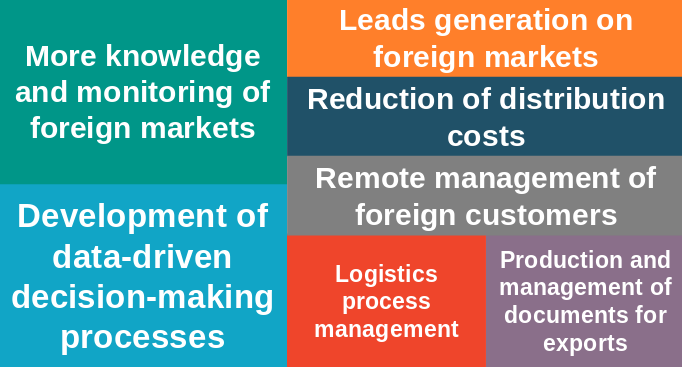Internationalization and Digitalization
From unbundling to differentiation-based globalization: which opportunities for SMEs?
Published by Luigi Bidoia. .
SME Premium price Internationalisation International marketing Digital ExportThere is a growing awareness in academia, business and politics that the current phase of economic development is characterized by a revolution in the organization of markets and businesses. The two factors that are driving this revolution are the development of digital technologies and the globalization of the world economy. The protectionist drift that is characterizing many countries represents an attempt to slow down this revolution, in order to allow people to adapt themselves to the change. For the time being, protectionism does not seem to be able to stop globalization, but it will help to change it.
In the period between 1990 and the start of the Great Recession (2008), the globalization of the world economy was characterized by the unbundling of activities along production chains and the relocation of the most labour-intensive activities to countries with lower labour costs. On the contrary, in this decade, the process of globalization has been supported by an increase in the demand for variety, due to the growth of middle class and by greater effectiveness in communicating the differentiation of the products/services offered. A key role is played by the new information and communication technologies, that allow to significantly reduce the cost of communication campaigns, contact and development of business relationships.
Opportunities for SMEs
Small and Medium Enterprises are and will be the main players in this revolution. Until a few years ago, globalization and digitalization were only possible for the largest and most structured companies, given the high costs of entry. In recent years, these two options have become increasingly accessible to small and medium-sized enterprises. The development of the markets of temporary management and internationalization services, on the one hand, and the growth of Software-as-a-Service platforms, on the other, have drastically reduced entry costs, making the "digitilization and globalization" option accessible even to smaller companies.
This article is intended as a first overview of those areas where digitalization is reducing the costs of globalization.
Digital technologies to support internationalization
Internet and digital technologies are becoming a fundamental tool for the internationalization of Small and Medium Enterprises, facilitating many activities related to the areas described below.

More knowledge and monitoring of foreign markets
The growth in the number and specialization of online magazines, blogs and social networks, as well as the growing availability of Open Data and Open Source programs for their processing, is allowing a drastic reduction in the costs of "market research". Until a few years ago, the collection of information on several foreign markets was an expensive activity, accessible only to large companies. Now an SME can access both comparative information of several countries and in-depth information on individual markets at low cost. [1].
Development of data-driven decision-making processes
Internationalization is a process that, in order to be successful, must involve the whole company. Without the real and committed involvement of all company functions, it can be difficult to overcome the many challenges posed by internationalization. Only extended decision-making processes based on objective information and explicit planning can produce this involvement.
Leads generation on foreign markets
This area is perhaps the one that is showing the greatest break compared to the past. In addition to the changes taking place in digital technologies and in the globalization of markets, styles and preferences, this area is also affected by the change in marketing from outbound to inbound. Communication is no longer advertising, but is aimed at a lead whose wishes/needs can be met by the company's products/services. New marketing techniques are making it possible to establish online relationships with leads interested in the company's offer and to remotely accompany them in purchasing decisions.
Reduction of distribution costs
E-commerce platforms are replacing foreign importers and distributors in the intermediation between the company and the final foreign customer, drastically reducing the costs of entry into a market.
Remote management of foreign customers
New communication technologies, often free of charge (Voip, Skype, Hangouts, WhatsApp, etc.), allow you to develop high-quality remote interactions with potential and actual customers. At the same time, the growing availability of Software-As-A-Service services for the management of business and after-sales processes has significantly reduced the costs of their management.
Logistics process management
The reduction of transport costs was the factor that, at the beginning of the 19th century, started the first phase of development of world trade. Since then, transport costs have been continuously reduced thanks to infrastructure development and economies of scale. This century has seen the development of automated warehouses for storage, packaging and shipping, further reducing overall logistics costs. In addition, tracking systems and web interfaces enable the continuous monitoring of all dispatch phases. SMEs can access all these services at low cost.
Production and management of documents for exports
Exporting goods to a foreign market often requires the production and sharing of many documents between several players. New technologies for structured document production and managed document sharing reduce the time needed to carry out these activities, reducing related costs.
[1] The Analytics section of this portal is an example of the increased availability of information on foreign markets.


